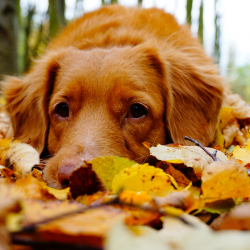Dermatophilosis, also known as streptothritic dermatitis, is a major concern in equine health. This skin condition is caused by the bacterium Dermatophilus congolensis. It manifests itself in characteristic lesions, often similar to scabs or dandruff. It mainly affects the back, neck and rump area of horses. The disease can be transmitted directly, through contact between animals, or indirectly, via vectors such as insects. Contaminated equipment and damp environments encourage bacterial proliferation.
What is dermatophilosis?
Living outdoors is good for a horse’s mental well-being. However, in damp or rainy regions, there is a risk of developing a skin condition . This is commonly known as “rain rot”. When it affects pastures, it is known as “mud mange”. These two conditions, although caused by the same bacteria, require separate treatments . Exposure to the elements is different. Dermatophilosis (or “rain rot”) is a bacterial infection. It is often confused with a fungal disease. It is characterised by crusty lesions mainly on the back and thighs.
The bacteria remain dormant until conditions (humidity, high temperature, rain, insect bites) favour their emergence and spread . Insects can act as vectors. From autumn onwards, it manifests itself as nodules, granular skin and hair loss in the affected areas. Climatic variations create a breeding ground for this bacterium, particularly on exposed parts of the body such as the rump, back or neck. This can exacerbate the risk of dermatophilosis in humid environments.
How do you recognise rain burp?
Equine dermatophilosis is characterised by small nodules under the coat, giving the skin a granular appearance. The condition progresses by causing the hair in the affected areas to fall out, gradually enlarging into irregular shapes. Although its appearance can be worrying, most cases are benign and resolve spontaneously in 90% of cases.
Identifying this condition is usually easy thanks to the distinctive bumps on the skin, which may be painful to remove but reveal a clearly depilated area. Particular care is required for horses with dense winter coats, as captivehumidity encourages the condition, potentially masking the spread of scabby patches. These patches, when removed, expose a yellow-green infection between the dead and healthy skin.
Clinically, brush-like crusts of hair appear, causing oozing and pain, followed by thickening and cracking of the skin, leading to areas of hair loss. Horses left unprotected outdoors frequently develop lesions on their backs and rumps, areas vulnerable tomoisture. Wounds under the tack or saddle require closer monitoring. Although the horse’sgeneral condition remains stable, heavy infestations can lead to lymphangitis, characterised by oedema and hyperthermia, especially if secondary infections emerge.
It is essential to distinguish dermatophilosis from other skin diseases such as mange, ringworm, lice oreczema specific to heavy breeds. If there is any doubt about the diagnosis, or if initial treatment fails, a skin sample is recommended to identify the precisepathogen.
Focus on mud mange
Dermatophilus congolensi: what is this bacterium and how is it spread?
Dermatophilus congolensis, a Gram-positive bacterium and facultative anaerobic actinomycete, is responsible for dermatophilosis in animals and humans. It is sometimes referred to as mud mange. It is characterised by the formation of crusts at the base of the hair .Containing the micro-organism, this condition is often confused with mycotic dermatitis. The disease, also known asrain scald in animals, has two morphological forms:
- filamentous hyphae that fragment into coccoid cells
- flagellated ovoid zoospores.
Microscopically, D. congolensis colonies show a characteristic tramline. This bacterium causes serious skin infections in cattle, horses, sheep and goats. This requires rigorous hygiene to prevent transmission to humans. Humidity favours its development, making damp conditions a risk all year round, particularly in poorly maintained environments. Skin lesions, mainly small crusted bumps, appear under the influence of favourable conditions, such as wet weather and insect bites . Insect bites can act as transmission vectors.
First identified in 1915 by René Van Saceghem in the Belgian Congo, the presence of D. congolensis in the environment and its activation byhumidity underline the importance of a dry environment to prevent the disease. Mechanical factors such as flies and ticks also contribute to its spread. An animal’s susceptibility to the bacteria can vary according to the colour of its coat, with greater sensitivity in animals with poorly pigmented skin and mucous membranes. Finally, the animal’s generalstate of health influences its vulnerability to infection, with immunosuppressed individuals or those in poor condition being more likely to develop the disease.
How should this skin condition be treated?
Characterised by the formation of skin lesions, including scabs and pustules, this disease can cause discomfort and pain in affected equines. The disease causes scabs and pustules on the skin. These lesions cause discomfort and pain in horses. Treatment targets thebacterial infection. It also reducesinflammation and helps healing. A comprehensive approach is needed. This includes improving the horse’s living environment. The affected areas need to be treated locally. Sometimes antibiotics are necessary. Environmental management is key to avoiding relapses. A dry, clean habitat is essential for the animal’s well-being.
To combat rain burp
To treat dermatophilosis in horses, a gentle approach is preferable. Nodules or hairy areas need special attention. Removing the scabs with a soft brush is beneficial. This reduces discomfort and helps healing. This technique eliminates thepathogen. It also encourages hair regrowth. It preserves the skin underneath.
Disinfectants can aggravate skin irritation. They make the skin more susceptible to infection. On the other hand, a moisturising oil helps to protect the skin. Water-free products are recommended. They form a barrier againstmoisture. This is crucial in combating dermatophilosis.
Dermatophilosis, although it can be impressive because of the extent of the lesions it causes, is in most cases a benign condition. It tends to resolve spontaneously in around 90% of affected individuals, provided the animal’senvironment is properly managed.
The recurrence of this disease can also serve as an indicator of internal imbalances, such as nutritional deficiencies or a state of general fatigue, requiring the animal’s diet or lifestyle to be assessed and adapted.
Finally, it is essential to minimise the environmental risks that encourage the development of dermatophilosis, by keeping the horses’ living areas dry and clean, and avoiding conditions conducive to dampness, to effectively prevent the onset and spread of this skin condition.
Against mud mange
The aim of treating mud mange in horses is to eliminate themoisture that causes the condition and combat thebacterial infection. It is crucial to avoid using bandages after bathing to avoid trapping moisture on the lower limbs.
Specific measures to treat this condition include:
- Sheltering the horse indoors to minimise exposure to outside moisture.
- Trimming the hair on the lower limbs to reduce water retention.
- Clean the affected areas with an antiseptic soap, rinse thoroughly and dry thoroughly. Then apply a greasy antiseptic cream, such as sulphured petroleum jelly, to protect against moisture.
- Protect the fold of the pastern with sulphured petroleum jelly during exercise.
At the same time, a course of antibiotics prescribed by the vet may be necessary for full recovery. Efforts to prevent proliferation once the horse is affected focus on reducing exposure to moisture in the lower limbs, involving :
- Shaving the hair to prevent moisture retention.
- Sanitising crusts with products such as chlorhexidine or Betadine scrub, followed by thorough rinsing and drying.
- The vet may recommend topical or oral antibiotics.
- Theapplication of a healing cream is recommended to soften the scabs and encourage healing.
Spontaneous healing is possible with the return of dry conditions or the application of simple hygiene measures. Additional use ofantibiotics may be considered if deemed necessary by the vet.
Prompt treatment is essential to prevent complications. Disinfecting grooming equipment is also recommended. The healing process often takes more than two weeks and is subject to recurrence. Severe cases may require systemic antibiotics. If the lesions persist or spread, veterinary consultation is imperative.
How can dermatophilosis be prevented?
Reducingmoisture on the lower limbs is crucial to preventing mud mange in horses. This means limiting theaccumulation of mud in areas frequented by horses. For example, paddock floors can be stabilised. Regularly changing the location of feed troughs helps to avoid repeated trampling. It is essential to dry limbs thoroughly after exercise.
As far ashygiene is concerned, solving the problem of dampness, particularly on the legs, is fundamental. Thoroughly drying the horse after a shower or exercise and monitoring the state of the pasture to avoid muddy areas are recommended.
To clean up the horse’s environment:
- Avoid taking horses out in wet weather.
- Softening and removing crusts by hand is recommended.
- Maintaining a clean, dry environment is vital, including regular cleaning of shelters and paddocks.
- Dry horses properly after exposure to water, using absorbent towels or a low-temperature dryer.
- Using protectors for the horse’s limbs in muddy conditions can prevent bacterial infections.
- A balanced diet rich in vitamins and minerals strengthens the horse’s immune system against infection.
Preventing dampness includes :
- Regulating the use of paddocks to avoid overgrazing.
- Drying out damp areas with sawdust or sand.
- Maintaining the stall so that the bedding stays dry, and making sure that urine is evacuated properly.
- In winter, apply a greasy substance to the dewlap to protect the skin. However, take care to avoid pads that retain moisture.
- Dry your horse thoroughly after a shower, especially in the hollow of the pastern.
- Avoid exposure to irritating substances such as mud or sand. They are likely to injure the skin in the fold of the pastern.
What natural measures can be taken?
To prevent the proliferation of dermatophilosis and ensure effective care while taking a natural approach, there are several options available:
- Use a clay or sanitising shampoo daily, without excess. It is important to allow the treated area to dry before brushing off any excess. Repeat the treatment as necessary, taking care to check the skin’s reaction to products, even natural ones.
- Cleansing withlukewarm water and an antibacterial shampoo orTea Tree, Noble Laurel or True Lavender hydrosol will soften the scabs and gently remove them, facilitating healing.
- Applying a claypoultice enriched withTea Tree, True Lavender, Noble Laurel or Chamomile Matricariaessential oil can support the healing process thanks to its absorbing and purifying properties.
- Mixing these essential oils withblack cumin vegetable oil on hair-free areas provides a protective barrier.Nigella oil, renowned for its anti-inflammatory and antibacterial properties, complements the action of the essential oils.
Clay is appreciated for its purifying and absorbent properties, helping to cleanse the skin and eliminate bacteria. In addition,Tea Tree essential oil is recognised for its powerful antimicrobial potential, whileNoble Laurel essential oil offers antibacterial and anti-rot benefits.True Lavender essential oil soothes infected areas and promotes healing, as does Chamomile Matricaria, known for its soothing effect on itching.
These natural methods, combined with rigorous hygiene and careful attention to the animal’s living conditions, can make a major contribution to the prevention and treatment of dermatophilosis, offering a gentle but effective alternative to conventional treatments.







